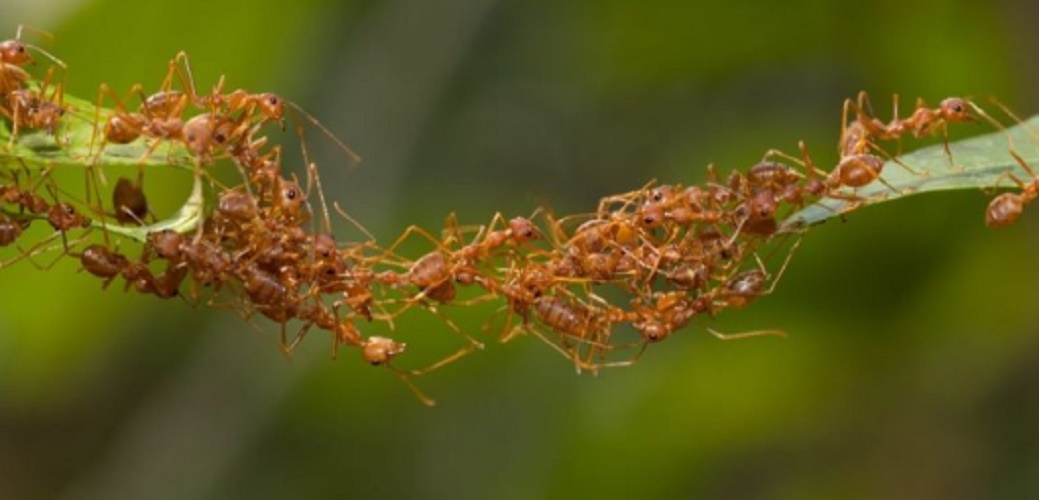What is a team work?
We explain what a work team is, the roles it contains, its types and other characteristics. In addition, its function in the animal world.
-
What is a team work?
A work team is a group of individuals oriented towards the achievement of a single common objective , that is, the undertaking of teamwork or collaborative work. Usually, it allows people with different talents, knowledge or skills to be associated to move towards the common goal, thanks to the synergy of individual abilities.
Since time immemorial, teamwork is one of the strategies most effective development of mankind, and that where the individual fails, the group generally prevails. Not for nothing we are social beings, gregarious, who prefer to live in the company of their peers. And in that sense, work teams of different nature have always existed.
Its strength and effectiveness lies in its cohesion and in the sense of belonging shared by its members, which promotes solidarity and cooperation . Thus, the weaknesses of some are compensated by the strengths of others, and the whole can move towards its proposed objectives.
However, this type of dynamics can only occur when teamwork does not become competition and internal struggle.
-
Characteristics of work teams
Work teams are usually characterized by:
- Possess common goals . Every work team advances jointly towards the achievement of the same objective, whose advantages will be shared among the members of the group or that will be equally beneficial for all. All equipment must operate as if it were a single entity.
- Possess some kind of leadership . Every work team has a leader , or a group of leaders, in charge of driving and decision making , when not coordinating efforts and resolving internal disputes.
- Its parts have interdependence . That is, that the members of a work team need each other to be able to achieve the objective, since otherwise they could try to do it on their own.
- It has communication dynamics . For a work team to function, it must have communicative dynamics, that is, ways of sharing information and of nourishing each other.
-
Types of work teams

There are six possible forms of work team, depending on their orientation and purposes. These are:
- Informal teams . Flexible internal organization, usually self-managed, these groups arise from the common interests of individuals or the possibility of resolving doubts, needs, etc., regardless of any type of administrative formality or formality. And with such simplicity they can be dissolved, once the proposed objectives have been achieved.
- Traditional equipment . As the name implies, they are teams formed “old-fashioned”, that is, from the legitimate power that the organization emanates , and therefore are formal teams. They have clear and well defined guidelines within it, and usually constitute clearly identified functional areas, departments or teams.
- Problem solving teams . Created with a specific purpose, these teams arise to face the problem in question and disappear as soon as it has been resolved, grouping in it in the meantime the best qualified individuals to jointly give it a quick and effective resolution.
- Leadership teams . Also known as management teams , they are composed of leaders from areas, departments or other teams, and are constituted to agree on general guidelines of the organization or collaborations between areas that would be very cumbersome to carry out bringing together their full staff.
- Self-directed teams . Common in outsourcing , these are teams that are given the freedom and autonomy to conduct their efforts and decide which is the best strategy to achieve a goal, regardless of their position within the organization or the company. They usually choose their own members and have a horizontal leadership structure.
- Virtual machines . Own of the global era that inaugurated the 21st century, they consist of groups of individuals geographically separated from each other, but connected thanks to technology . Their work tools are usually videoconferencing, email and other forms of Internet connection .
-
Roles in a work team
A work team can have as many roles as it requires, and these can be formal or not, fixed or rotating, all according to the nature of the group. Even in some cases the same individual can play more than one role.
The main assignable roles in a work team are:
- Leader or coordinator . The decision maker guides the joint effort or resolves internal disputes, trying to maintain a cordial and effective environment within the group, oriented towards teamwork and not competition . Their obligations include motivating and setting an example.
- Secretary . One who is in charge of the internal bureaucracy of the team, if any, or of the minimum administrative management necessary to have an internal order, such as keeping the file, making a minute of each meeting, communicating to the members of the group among themselves, etc.
- Creative . The person or persons in charge of the artistic or creative part of the group, usually dedicate themselves to the design , the embellishment or the writing of the documents emanated from the team, as well as presentations, dissertations, etc.
- Generating resources . The one who is in charge of obtaining the necessary resources for the constant and fluid operation of the group, regardless of what type of resources it is. It can be thought of as a “producer” in cinematographic terms.
- Evaluator . The one who evaluates, as the name implies, the management of the working group, in order to provide feedback on the basis of the objectives achieved and know how close to achieving the final objective they are.
-
Work team and work group
At first glance, both terms appear to be synonyms: work group and work team. But a fundamental difference separates them, which has to do with the degree of internal organization that one has.
Thus, work teams are usually stable, fixed, with a certain level of commitment and formality, even when it comes to informal teams. There is a hierarchy and an internal order to solve certain problems.
In contrast, the working groups are much more flexible and horizontal . They do not necessarily have a leader, nor a fixed agenda, nor are they guided by much more than the needs of their members, which can vary often. A work group is a group of people who organize themselves around a common goal, but often without distributing the work.
-
Teamwork in animals

Animals also work in teams, especially in cases where there is a mutual benefit for individuals , as is the case with biotic commensalism relationships . Commensal animals undertake a relationship of mutual benefit or benefit of one without detriment to the other, usually around feeding or protection against predators.
So do, for example, some marine predators and certain species of scavenger crustaceans: the former come to the latter to clean their teeth, removing the pieces of the hunt, in exchange for providing them with easily accessible food .
It is also common to see teamwork among individuals in a hive or massive den , as is the case with many insects. These common efforts among numerous individuals make it possible to repel aggressors, transfer huge food quotas and, in short, benefit the entire hive, even if it is at the expense of a few individuals. Ants are the best example.



